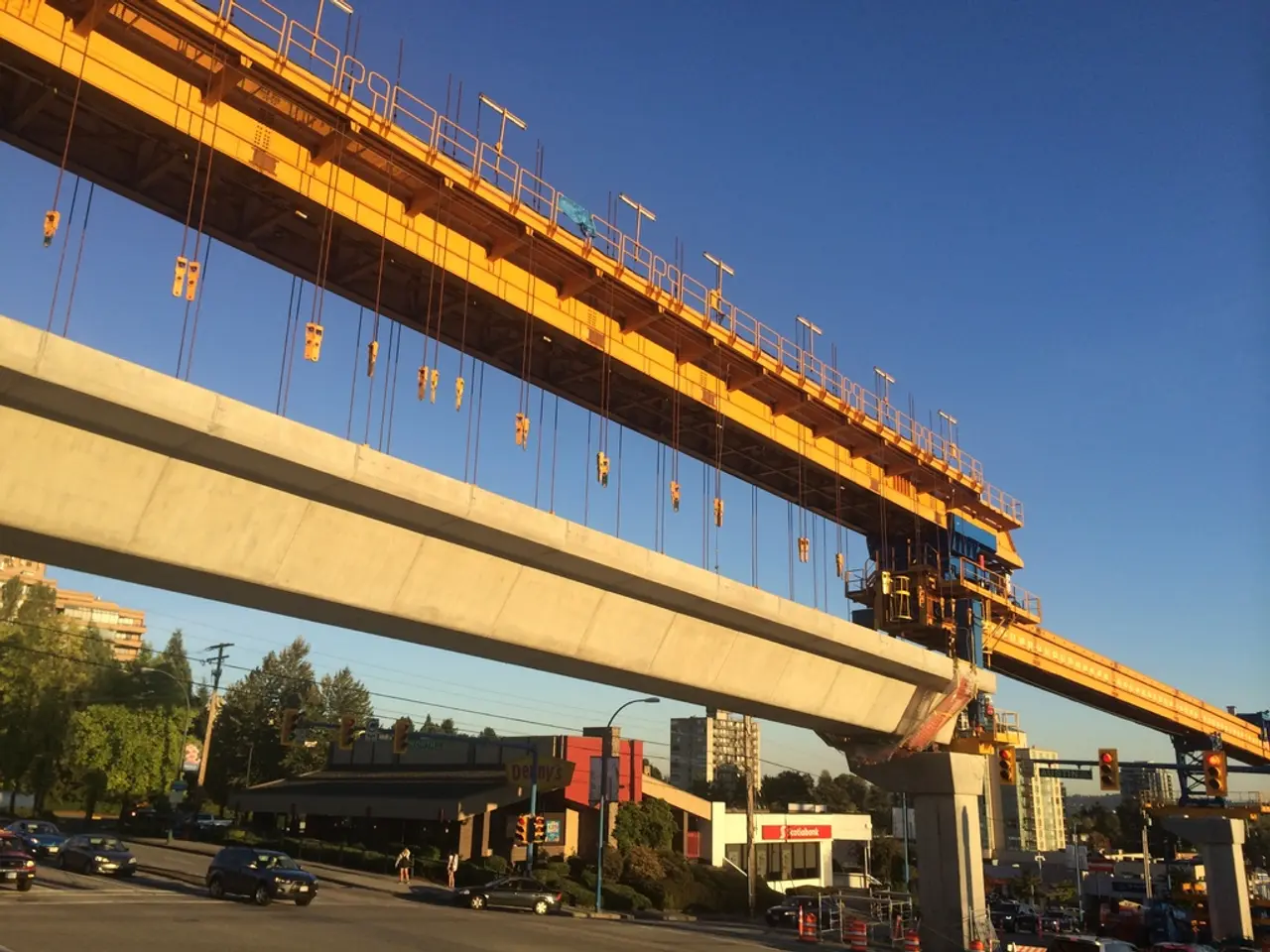Construction leaders in Australia and New Zealand contemplate restructuring their operational strategies
According to Kennards Hire's 2025 Construction Confidence Check report, the Australian and New Zealand (ANZ) construction industry is undergoing a significant transformation. The report highlights key priorities related to sustainability and workforce development.
Sustainability Priorities
The construction industry is moving towards smarter, circular, and on-demand approaches, prioritizing efficiency, flexibility, and long-term sustainability. Almost all respondents (99%) are either actively implementing or exploring cost-saving strategies, indicating a focus on optimizing operations while maintaining sustainability objectives.
One of the key contributors to operational inefficiencies includes lack of quality or available materials, time wasted managing multiple suppliers and project managers, lack of specialist project management expertise, lack of skilled labor, and outdated equipment. Among ANZ business decision-makers who reported experiencing cost impacts from delays or reduced productivity, one in three estimate that these challenges affect an average of 15.5% of a typical construction project's total cost.
Workforce Development Priorities
Investment in technology is a significant focus for many businesses. A significant portion (68%) plan to invest more in technology to improve planning and project management, crucial for enhancing efficiency and supporting workforce development.
Despite this, less than half (47%) of the businesses are looking to hire more staff, indicating a cautious approach to workforce expansion. This could be due to economic pressures and the focus on optimizing current resources.
Addressing operational inefficiencies is a strong emphasis, with over 96% reporting additional costs arising from delays or reduced productivity. To combat this, 36% of ANZ decision-makers plan to hire or rent equipment to boost flexibility and avoid idle assets, and 51% plan to outsource specialist expertise to fill capability gaps and reduce coordination overhead.
ESG Factors
The report also reveals that 59% of ANZ construction firms plan to prioritize Green Building Council Australia and New Zealand Green Building Council certifications as part of their top 5 Environmental, Social, and Governance (ESG) factors. Additionally, 48% plan to shift to sustainable building materials, 49% plan to prioritize eco-friendly tools and carbon offsetting strategies, and 57% prioritize career advancement opportunities within the industry.
Industry Confidence
Despite these challenges, confidence in the industry remains high. Nine in ten leaders (91%) expressed confidence in the industry's performance over the next five years. Tom Kimber, a General Manager of Sales at Kennards Hire, stated that the industry is optimistic but realistic. He noted that the shift towards on-demand and circular models, like equipment hire, is a strategic response to growing demands for speed, adaptability, and sustainability.
Global pressures, such as tariffs, shipping delays, and shifting trade regulations, have impacted 92% of ANZ construction leaders in the past year. However, many businesses are adapting by outsourcing for specialist expertise not just to fill skill gaps, but to reduce friction and keep projects moving.
In conclusion, the ANZ construction industry is prioritizing sustainability through flexible operational models and cost management, while focusing on technological advancements and efficient workforce management to drive growth and competitiveness. The industry shows high confidence, with many businesses adapting to global challenges and focusing on long-term sustainability.
- The construction industry is prioritizing technology investments (especially in planning and project management) to improve efficiency and support workforce development.
- In the ANZ construction industry, a significant number of businesses (68%) are planning to invest more in technology.




